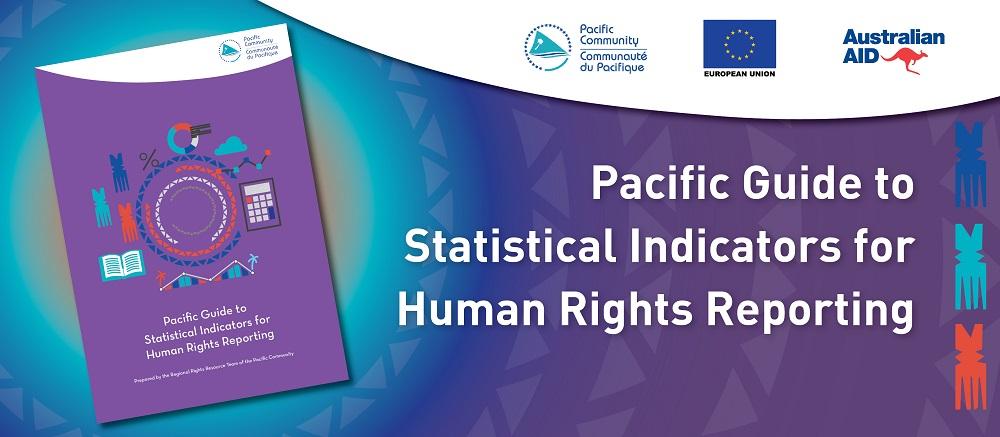Launch of Pacific Guide to Statistical Indicators for Human Rights Reporting
The Pacific Community (SPC) has this week launched a practical guide that will assist Pacific governments in their human rights treaties reporting.
This is the first such document of its kind on human rights reporting under the core human rights treaties in the Pacific.
The Pacific Guide to Statistical Indicators for Human Rights Reporting proposes a set of indicators that are contextually relevant and meaningful for the region, acknowledging the unique challenges and opportunities that Pacific Island countries experience in data collection, national institutions and resources.
Produced by SPC’s Regional Rights Resources Team (RRRT) with funding support from the European Union and the Government of Australia, the guide emerged from, and is informed by two regional workshops held in Nadi, Fiji in 2014 and 2016, with statisticians from the national statistics offices and government focal points on human rights and gender.
The first workshop shared good practices and lessons learned on human rights and gender statistics, and reflected the reality of challenges the region faces in collecting adequate and reliable data, as well as in interpreting available data. It was held in partnership between UN Statistics Division from New York, SPC Statistics Division, SPC Gender Division and SPC RRRT.
Based on these discussions, a set of core indicators were identified and the guide developed. The second workshop validated the indicators contained in the guide, identified any gaps and suggested improvements.
The guide sets out practical information on feasible and aspirational human rights indicators, based on reliable data that can be systematically collected. It also shows how to interpret the data collected under each indicator for reporting.
“The Pacific Guide to Statistical Indicators for Human Rights Reporting is a crucial tool that will assist our governments in addressing the specific articles under the core treaties they are reporting on,” RRRT Senior Human Rights Adviser, Romulo Nayacalevu, said.
“This tool is the result of SPC working with our governments for many years around human rights reporting and responding both to the governments on the need for such tools to guide the reporting exercise as well as the treaty body committee’s recommendations and concerns around lack of crucial information or data around the various articles,” Mr Nayacalevu said.
Statistical indicators are also provided, article-wise, for five core human rights treaties: the International Covenant on Economic, Social and Cultural Rights (ICESCR); the International Covenant on Civil and Political Rights (ICCPR), the Convention on the Elimination of all forms of Discrimination Against Women (CEDAW), The Conventions on the Rights of the Child (CRC) and the Convention on the Rights of Persons with Disabilities (CRPD).
The guide will assist coordinating bodies within Pacific Island governments responsible for preparing initial and periodic reports on the country’s progress on implementation of ratified treaties, as well as those overseeing the implementation of national human rights action plans.
Human rights and gender focal persons will have a reference point for determining the key data they will need to work with national statistics offices in collecting and analysing for these purposes.
It will also help national statistics offices to better understand how the statistical data they collect, analyse and provide feeds into human rights reporting.
The publication is available on the RRRT website.
Media contact:
Onorina Saukelo, RRRT Communications Assistant, [email protected] or +679 330 5582
Useful link:
SPC Regional Rights Resource Team
